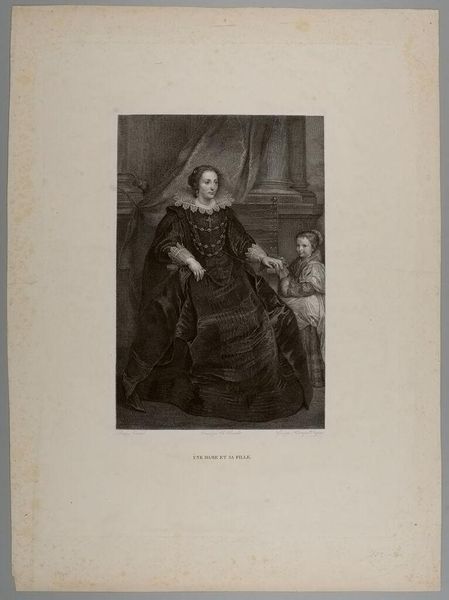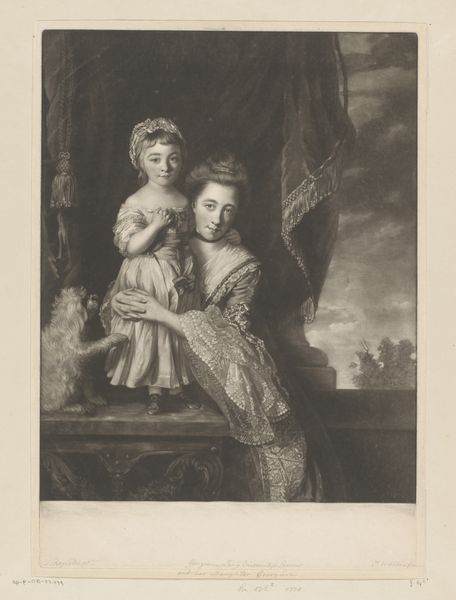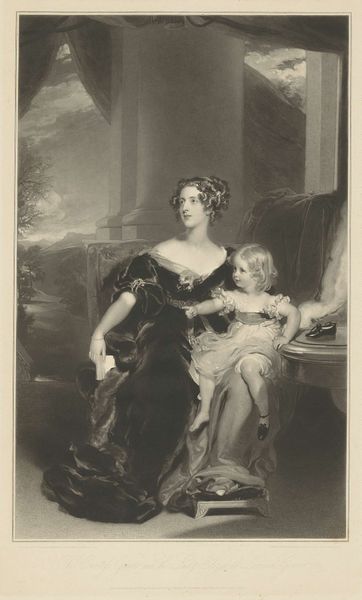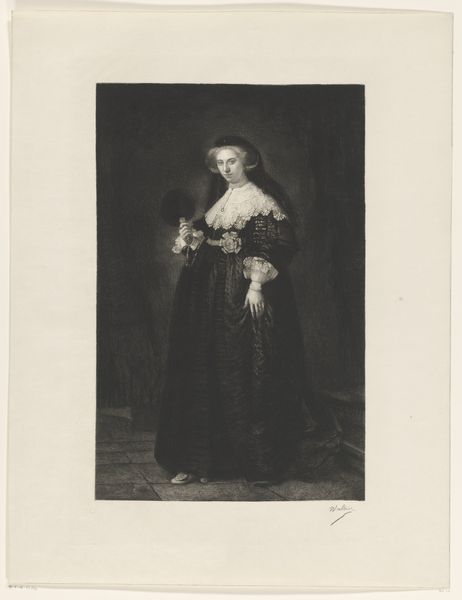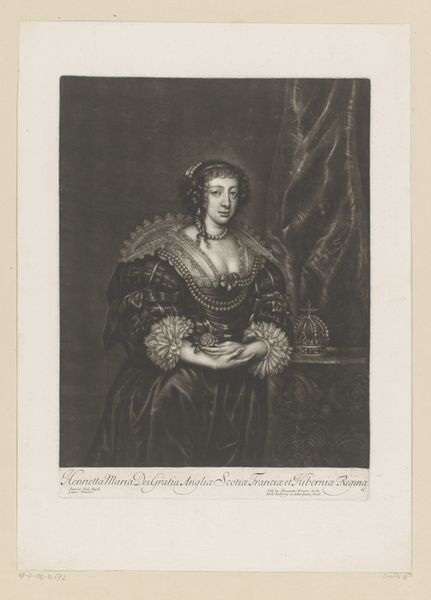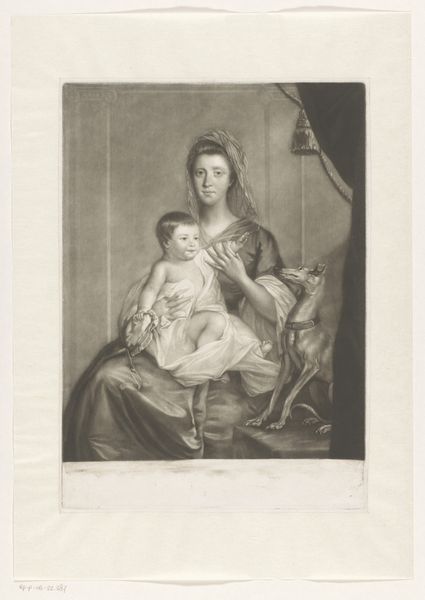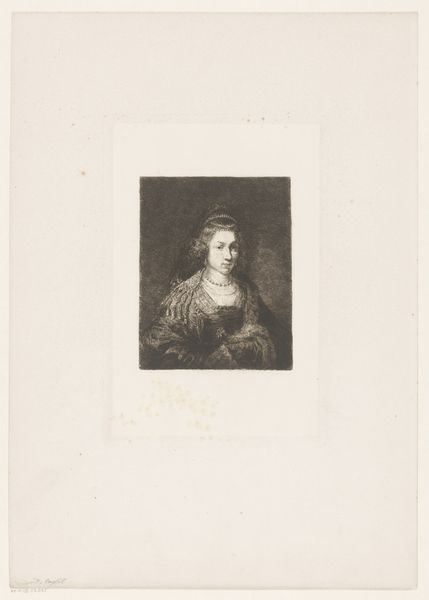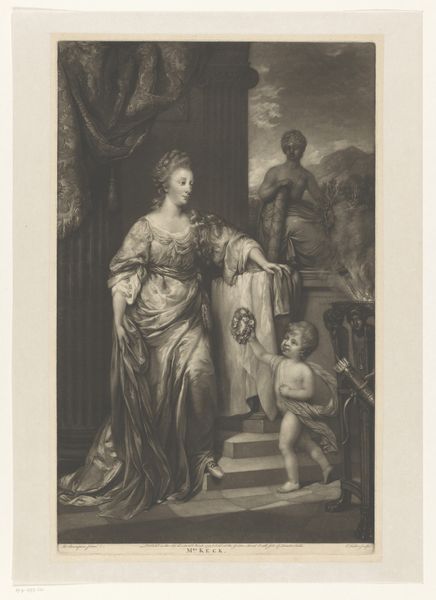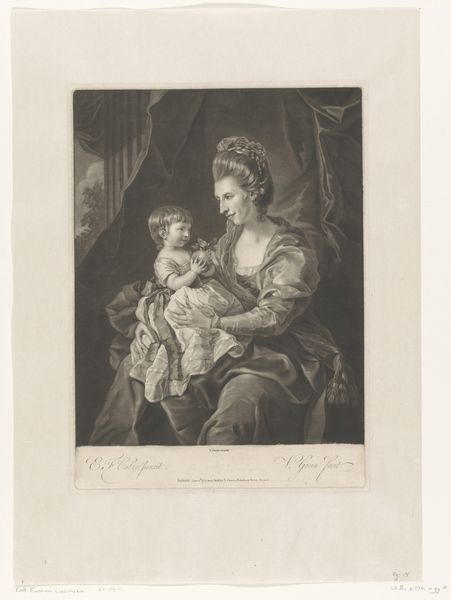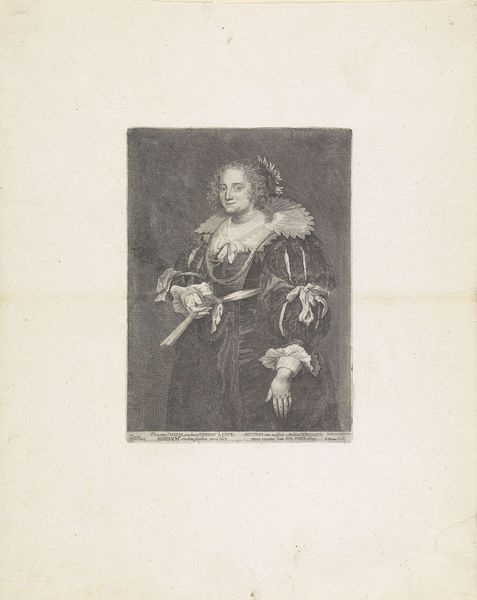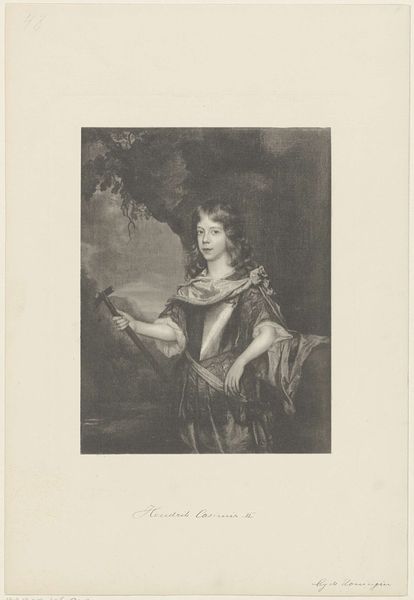
print, woodcut, wood-engraving, engraving
#
portrait
# print
#
pencil drawing
#
group-portraits
#
woodcut
#
united-states
#
wood-engraving
#
engraving
Dimensions: 8 x 5 1/4 in. (20.32 x 13.34 cm) (image)11 5/16 x 8 7/8 in. (28.73 x 22.54 cm) (sheet)
Copyright: No Copyright - United States
Curator: Welcome. Today, we're looking at Timothy Cole's "Portrait of a Lady and her Daughter," an engraving from 1894, housed here at the Minneapolis Institute of Art. Editor: It's incredible how much detail he captures with just lines. I'm really drawn to the contrasting textures between the woman's dress and the crispness of her ruff. What stands out to you? Curator: Indeed, the manipulation of line is masterful. Notice how the density and direction of the engraved lines create form and volume. Consider how the light is rendered – observe its fall on the subjects' faces, highlighting their features. Note how little tonal range is deployed to achieve this effect. Editor: The shading is remarkable, especially around her face, it feels almost three-dimensional despite being a print. But beyond the faces, my eyes want to wander, especially to the drapery behind her. Is that a column too? What's its role within the composition? Curator: Precisely. The composition is deliberately constructed. The column and drapery provide a structured backdrop, framing the figures. Ask yourself how these background elements influence your reading of the portrait. Does it emphasize the figures' stature, for example? What about their relationship? The woman and child almost appear in their own, curated theatre. Editor: That’s interesting. I hadn't thought of it as theatrical. Now I can't unsee it. Looking closer, Cole has made them more than just a "portrait," but characters in a space. Curator: And by doing so, he elevates the formal elements beyond mere representation. The piece then becomes an exercise in balancing light, shadow, texture and space – its subjects occupying center stage. Editor: This has completely shifted my perspective. Initially, I was only thinking about its visual elements. But now I’m viewing "Portrait of a Lady and her Daughter" almost like an early movie still! Curator: An astute observation. Recognizing this shift and building a dialogue between image and the mind's eye – there is a new language formed.
Comments
No comments
Be the first to comment and join the conversation on the ultimate creative platform.
